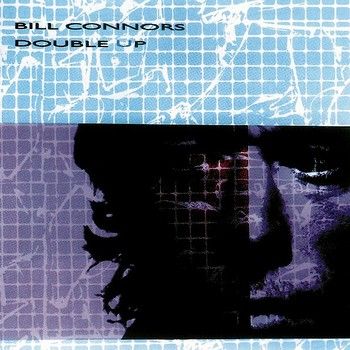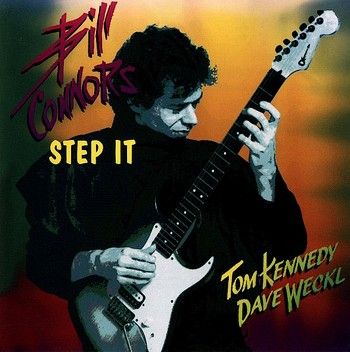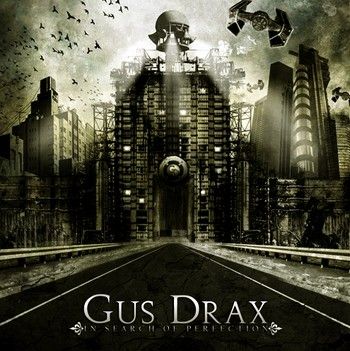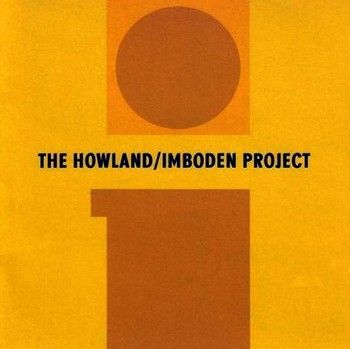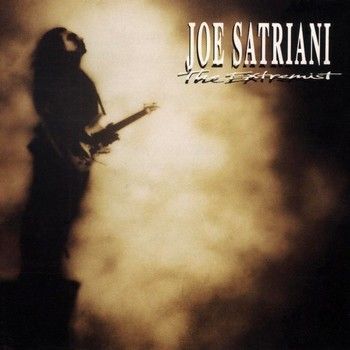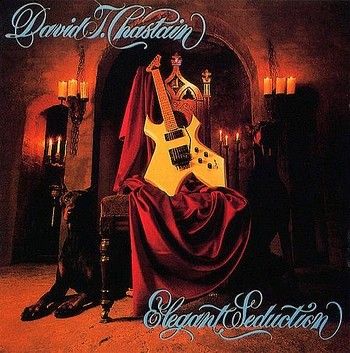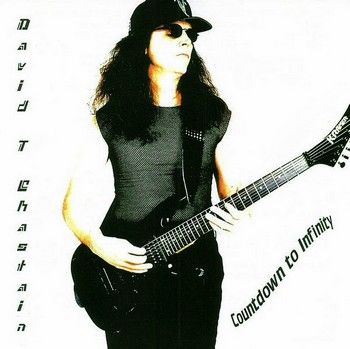
Guitar virtuoso Richie Kotzen burst onto the heavy metal scene as a teenager with a lightning-fast guitar technique. After recording three albums for the Shrapnel label -- including his 1989 self-titled debut, the following year's Fever Dream, and 1991's Electric Joy -- he was recruited into the party-metal group Poison to replace C.C. DeVille, who was forced out of the band due to his substance abuse problems. Kotzen recorded 1993's Native Tongue with the group, and the album showcased his shredding style as well as his blues-based influences. However, Kotzen left the band to return to his solo career, which included collaborations with fellow guitar hero Greg Howe. By the end of the '90s, Kotzen was also working with the latest lineup of Mr. Big, as well as the fusion group Vertú. In 1999 he released Bi-Polar Blues and the following year saw the domestic release of three albums -- Something to Say, Wave of Emotion, and What Is... -- which were previously available only in Japan. Slow and Change arrived in 2003, followed by Get Up in 2004 and Acoustic Cuts the following year. His first compilation, Instrumental Collection: The Shrapnel Years, was released in the summer of 2006, with the all-new Into the Black arriving later that fall. © Heather Phares © 2013 AllMusic, a division of All Media Network, LLC. | All Rights Reserved http://www.allmusic.com/artist/richie-kotzen-mn0000852081/biography
First off, I must warn everyone that when it comes to anything that has Richie Kotzen's name attached to it I am 100% biased, I will admit! I've been a devoted fan of all things Kotzen since I got his Fever Dream cassette in 1990. I am not so "blinded" as a fan that I won't admit when something isn't up to par with Richie's talent. Case in point, his 1999 release Break It All Down. That disc sonically was flat and sadly the writing and playing seem very un-inspired with the exception of the song "It Burns". However, with that being said, to say I was a tad leery of what was to come when Richie announced a few months back that the title of his forthcoming CD was Return Of The Mother Head's Family Reunion would be a MASSIVE UNDERSTATEMNT! To someone new to the abundant talents of Richie Kotzen, or to the casual listener, this wouldn't be that big of a deal, but to this devotee and to all his hardcore fans worldwide it was cause for us to hold our collective breaths. It would be the equivalent of the biggest Guns N' Roses fan to hear the news that their next album was to be titled 'Appetite For Destruction PT. II', because just like Guns N' Roses, only the frontman remains from the lineup that made the album such a benchmark for all things that Richie has done since 1994 or before are judged. Gone are drummer Atma Anur, bassist John Pierce (who played on the album but did not tour behind it, that was John Moore), and producer Richie Zito. In their place is powerhouse drummer Franklin Vanderbilt (who has toured with Richie in the past and played on his AI SENSHI ZxR:Music From The Animation Series Gundam, released in 2005), bassist Virgil McKoy who was discovered by Richie playing in a bar in Lancaster County, PA., keysman extraordinaire Arlan Schierbaum who has played on several of Richie's past solo albums, and taking over the production helm was Richie himself which to RK fans is nothing new considering most of his solo output was handled by himself. This album also marks the recording debut of Richie's beloved 10 year old daughter, August Kotzen. She definitely gives her Dad a run for his money. Mark my words, judging by the talent displayed on the four tracks in which she appears, she will, one day, make an impact on the music industry if she chooses to follow in her Dad's footsteps. Of course, it should be noted that her genes play a major role in that talent! The original Mother Head's Family Reunion, released in 1994 on Geffen Records, was an intimate look inside Richie's world at the time. Fresh from his stint in Poison, newly married, and set to make his major label solo debut, all eyes were on Richie. He had released three solo albums between 1989 to 1991 (two instrumental and one vocal) for the indie label Shrapnel Records. He also had a song on the 1991 soundtrack for Bill & Ted's Bogus Journey before joining Poison in January 1992. Mother Head's Family Reunion was a lyrical diary of sorts for all that happened in 1993-1994. Ever-present were the virtuosic guitar skills that made Richie stand out in the late 1980's/early 1990's guitar player scene. What was not expected with MHFR was the maturity and diversity shown not only as a guitarist but also as a songwriter and vocalist. This was due primarily and unjustly because of he was only 22 when MHFR was released and because of his tenure in Poison. Richie had grown leaps and bounds from his last solo output, Electric Joy, in 1991. Such growth displayed on MHFR was responsible for his expanding and loyal fanbase and for making the album his equivalent of Guns N' Roses' Appetite For Destruction or what IV/Zoso is considered to be by Led Zeppelin fans. HERE IS MY TRACK BY TRACK RUNDOWN............. GO FASTER (2:55): The title of the lead track is an indication of what to expect from this hard-driving tune. Showcasing Virgil's funky bass runs as well as an extremely catchy chorus. Richie tastefully returns to his shredder roots on the short-yet-sweet solo that will leave your head spinning. Arlan weaves some hypnotic sonic textures throughout and let us not forget the angelic background vocals of August Kotzen. Franklin keeps in right in the pocket with his subtle yet Bonham-esque drumming. This tune should make a fantastic opener for Richie's live shows in the near future as it certainly kicks this CD off to a scorching start! FEED MY HEAD (3:37): While the opening bars of this send-off tune are eerily reminiscent to the opening run of "Socialite" from the original MHFR, it fits as this appears to lyrically be a sequel of the aforementioned track. Franklin lays down a skull-crushing funkified backbeat fitting in perfectly with Virgil's Bootsy-esque bass licks. Enough can't be said for what Arlan brings to the mix. Richie's aggressive vocals bring to mind some of his heavier performances from his Forty Deuce project, while his guitar playing is exactly what his fans have to come to expect from him. Translated.....meaning, BRILLIANT! FOOLED AGAIN (8:00): Multi-layered vocal harmonies and Arlan's Floyd Cramer inspired touch give this epic a soulful heavenly feel. Virgil really shines, taking the listener on a journey compelling you to close your eyes and lock into the groove. This tune is soooooo good that if you will follow my advice and close your eyes and just 'feel it' that you will be stunned to learn that eight minutes had just went by! I can only imagine that live, this cut will be extended into a jam that would make the Allman Brothers Band quiver. CAN YOU FEEL IT (4:25): Opening with a blues boogie and vocal that is nothing short of an ode to ZZ Top. The boogie never stops while Richie's vocals head back to familiar territory for his listeners. The overall vibe of this romp is one of a Southern Baptist Church Tent Revival that makes you want to stomp n' rejoice along with it until its 110 degree heat makes you collapse. Franklin and Virgil are as great of a rhythm section as I've seen since first discovering Anthony Gomes' bassist Biscuit Miller and the long list of drummers who have kept the beat behind him over the years. Yet another blistering solo from Richie and let's not forget the 'beyond her years' harmonies of August. Billy F. Gibbons and the boys would be proud of this cut! YOU'RE CRAZY (5:19): WARNING.....Turn the bass down on this one because Franklin's subtle yet earthquake-inducing bass drum along with Virgil's 'right-there-in-the-pocket' groove will leave you and your abode trembling. Arlan's sparse keys have a H.I.M. tonality to them. Richie's wah-wah infused guitar intermingles beautifully with Arlan, leaving you wondering which is which. Lyrically, Richie seems to come from a 'lover scorned' point-of-view while trying to resist the temptation of returning to the one that caused him such pain. CHASE IT (3:52): Without a shadow of a doubt, this is my favorite song on this album. It takes me back to when I first heard Richie's angelic vocals on "A Woman & A Man" off of the 1994 CD. Richie's solo is one that would make Slash go back to the drawing board. This piano driven track is mixed with wonderful vocal harmonies, so much so that this could easily be a Top Ten radio hit here in the U.S. if it weren't for the close-minded, trend-chasing idiots who helm the major record companies of today! BAD THINGS (4:56): This track has a Doyle Bramhall II & Smokestack and The Black Crowes stank all over it!! For anyone who has ever heard those bands, you know that can't be a bad thing (sorry, I couldn't resist!). Richie channels some serious Jimi Hendrix mojo within his solo while the rest of the band holds down the fort throughout this chugging track. DO IT TO YOURSELF (3:45): Full of catchy hooks and a sing along chorus, lyrically this songs seems to be a cautionary tale. Maybe someone needs to lock up the young Hollywood scene into a room without their Blackberry's and cell phones and make them listen to this track over-and-over for an hour. It may do them some good but I highly doubt it. Similar in context to "Get A Life" and "Change" from Richie's 2003 album of the latter-mentioned name. It will inspire you to get off your ass and make some much needed improvements to your life if it's in need of such. Oh, and musically speaking, it is not too shabby either and will have you tapping your foot along for the duration. DUST (5:28): Starting off with a tasty run of the frets that would make Stevie Ray Vaughan proud, this cut will surely leave you in the dust if you are not careful (once again, I couldn't resist!)! By far the best guitar tone of the album is displayed on this cut. Not enough praise could be heaped upon Franklin and Virgil for the relentless groove they bring to the table on this cut and the album itself. Arlan blends in some psychedelic keys to make this song a lethal cocktail of energy! FAITH (6:40): This track starts off with Richie and Arlan blending their respective instruments into nothing short of an evangelical journey that has Virgil, Franklin, and August backing them up in their ever-graceful way. You feel a sense of deja-vu that takes you back to the 1993 Poison hit "Stand". It should be stated that contrary to what the album (Native Tongue) leads you to believe, that song was 99% Richie's with Bret changing a few words around (IMO, because he wouldn't have been able to sing it as it was wrote by Richie!). If you are in doubt, do yourself a favour and buy a Japanese import copy of Richie's 2004 album Acoustic Cuts. It features the song as it was, lyrically and melody wise, when Richie brought it to the band in 1992 but in its pure acoustic form. I'm off my soapbox now but "Faith" will leave you basking in a spiritual light that his purely Richie Kotzen and his band! YOU KNOW THAT (3:55): This fusion funky track takes you back to Richie Kotzen circa 1995-1997. Equal parts Inner Galactic Fusion Experience, Wave Of Emotion, and Something To Say, all albums from that era in Richie's vast discography, brought to today by each respective musicians' enormous talents. Arlan in particularly shines on this song. Once again the choir infused harmonies provided by August and her 'has to be proud' Poppa bring this tune into another level. Let us not forget yet another rippingly tasteful solo from the man! SATELLITE (4:15): I am usually not to keen on instrumentals by any means, largely due to the fact that the majority of them are ego stoking wankfests. This one is not one of them. Sure there are brief moments of the 'go for the spotlight' mentality for each musician involved that are common with instrumentals. It never takes away from the song as a whole. This song could have easily been from Inner Galactic Fusion Experience or the album Richie did in 1999 with Stanley Clarke and Lenny White called Vertu. To put it simply, this band is sheer virtuosity at its finest! In conclusion, Richie has returned to a more guitar oriented approach without sacrificing the song. This CD has far exceeded my lofty expectations, I NEVER thought I would see the day that Richie would release an album that would replace the masterpiece known as Mother Head's Family Reunion as my favorite in his impressive discography but HE HAS DONE IT WITH THIS ONE!!!! Rest assured he has done the 'legend' of MHFR justice, and then some! That being said, endless praise should be given to Franklin, Arlan, Virgil and August for the brilliance they brought to this album. The production, songwriting and musicianship are all top notch. I can only hope and pray that Richie keeps this lineup together for a long time to come...or at least until August decides to go solo. DO YOURSELF A FAVOR AND HAVE THIS ALBUM IMPORTED INTO YOU CD PLAYER, SURE IT WILL SET YOU BACK AT LEAST $30 BUT IT IS DAMN WORTH IT! Now, back to jammin' this badboy!... www.richiekotzen.com - www.myspace.com/richiekotzen Reviewed by & © Justin 'Crash' Crafton for Sleaze Roxx, July 2007. © http://www.sleazeroxx.com/bands/kotzenrichie/return.shtml
"Return of the Mother Head's Family Reunion" is the twelfth official studio album by the brilliant, virtuoso guitarist/vocalist Richie Kotzen. In the US this album was released with the title "Go Faster" with a different cover and songs order. The European release of the album contained the bonus track, Drift", and the Japanese issue featured here contains the bonus track, "Satellite". This is without doubt one of Richie Kotzen’s best albums. Richie Kotzen has described his own music as a mix of rock, blues, jazz, fusion, and soul music. “Return of the Mother Head's Family Reunion” bounces between all these genres, and throughout, his guitar work is stunning. RK has talent to burn! This album is VHR by A.O.O.F.C. Listen to his “Fever Dream” and “Live In São Paulo/Bootlegged In Brazil” albums, and check out his “Peace Sign”, “What Is...”, “Instrumental Collection: The Shrapnel Years”, and “Greg Howe, Richie Kotzen Project” albums on this blog [All tracks @ 320 Kbps: File size = 120 Mb]
TRACKS
1 Go Faster 2:56
2 Feed My Head 3:38
3 Fooled Again 8:01
4 Can You Feel It 4:25
5 You’re Crazy 5:19
6 Chase It 3:52
7 Bad Things 4:57
8 Do It to Yourself 3:45
9 Dust 5:29
10 Faith 6:41
11 You Know That 3:56
12 Satellite (Japanese Version Bonus Track) 4:16
All tracks composed by Richie Kotzen
MUSICIANS
Richie Kotzen - Guitar, Mandolin, Vocals
Virgil McKoy - Bass
Arlan Schierbaum - Hammond A-100 Organ, Wurlitzer & Rhodes Electric Pianos, Clavinet, Minimoog, Oberheim 2 Voice, Mellotron, Chamberlin, Acoustic Piano, Yamaha E-70
Franklin Vanderbilt - Drums & Percussion
August Kotzen - Additional Background Vocals on Tracks 1, 4, 10, 11
BIO (WIKI)
Richard Dale "Richie" Kotzen, Jr. (born February 3, 1970 in Reading, Pennsylvania) is a guitarist, singer, songwriter and producer. Currently he is touring with The Winery Dogs with Mike Portnoy and Billy Sheehan, supporting an album they recorded in Los Angeles in August 2012. Richie Kotzen began playing piano at the age of five. At the age of seven he was inspired by the band KISS to learn the electric guitar. He started his career in a band named Arthurs Museum. Kotzen was eventually discovered by Shrapnel Records' Mike Varney, and he recorded his first solo album by the age of 19. He created the video Rock Chops for REH video in 1989, highlighting many of his formative techniques, including using wide-intervals and fluid sweeping. In 1991, at age 21, Kotzen joined glam-metal band Poison, co-writing and performing on the album Native Tongue. This album produced two top twenty singles which Kotzen co-wrote, "Stand" and "Until You Suffer Some (Fire & Ice)". In late 1993, he was dismissed from the band for having an affair with drummer Rikki Rockett's fiancee, Deanna Eve. In 1999 Kotzen replaced Paul Gilbert as guitarist in the mainstream rock band Mr. Big, performing on their album Get Over It. He also contributed guitars to their subsequent release Actual Size. The record included the Kotzen song Shine, which debuted at number one on Japanese radio charts. After Mr. Big disbanded, Kotzen released the solo album Change, in 2003. The title track and the song Get A Life were featured in TV commercials throughout Japan. In 2002 Kotzen bought a commercial building in Los Angeles and established a recording studio and production company. He has since produced acclaimed solo albums and collaborated with various figures in rock (Gene Simmons), jazz and fusion, including jazz legend Stanley Clarke. In 2006 Kotzen was the opening act in Japan for The Rolling Stones on their Bigger Bang tour. In 2013 the super rock band, The Winery Dogs released their debut album on May 15, 2013 in Japan. Kotzen has described his style as a mix of rock, blues, jazz, fusion, and soul music. Of his albums, he claims he is most proud of Vertú. Kotzen utilizes a heavy amount of legato and sweeping in his playing. As his main influence he lists Jimi Hendrix, Stevie Ray Vaughan, Eddie Van Halen, Jason Becker, who produced his first album, Allan Holdsworth and many other jazz and fusion players.
MORE
Touted as one of the best guitar players in the world, Richie Kotzen also possesses a voice on par with some of the greatest rock/soul singers and is highly regarded as a gifted songwriter. Richie has had an incredible journey into the world of music. With guitar styles ranging from rock, blues, jazz and fusion to pop and soul, Kotzen has built a remarkably diverse 20 year career as a guitarist, singer and songwriter. During that span, he has not only built an incredibly successful solo career, but has also found himself writing, recording and playing live with a variety of different artists, ranging from Pop/Rock bands like Poison and Mr. Big to Jazz/Fusion groups like Vertu featuring Kotzen and Jazz legends Stanley Clarke and Lenny White. Working with these artists has provided Richie with a great deal of in-studio experience, as well as the opportunity to tour the world, introducing him to an international audience. In fact, his immense popularity overseas led Kotzen to one of his greatest honors - touring as the opening act on the Japanese leg of the Rolling Stones’ 2006 “A Bigger Bang Tour”. A prolific songwriter, Richie has written several songs that have gone on to become hit singles around the world. His song “Stand.” written while a member of Poison, reached the top 20 on the Billboard charts. As the lead single off of their album NATIVE TONGUE, “Stand” was the catalyst for the album reaching platinum status. While with Mr. Big, Richie also enjoyed another milestone, having his song “Shine” reach #1 in both Europe and Japan. Richie has just released his 20th solo album, entitled PEACE SIGN. He continues to make amazing records and to tour around the world, playing stadiums, festivals, and clubs. His current tours have spanned several continents, including North America, Europe, South America and Asia. He has played with many other well known musicians, has performed on television programs such as “The Tonight Show with Jay Leno” and “Live with Regis and Kelly,” and continues to appear in countless books, magazines and websites, being acknowledged as one of the top guitarists in the world! Kotzen is one of the few artists to be honored by Fender Guitar with not one, but two signature model guitars. The Kotzen Telecaster guitar has repeatedly been the #1 selling signature model guitar for Fender Japan. Cornford Amplification also honored Kotzen with his own signature series guitar amp (the RK 100) which in 2005 was voted Amp of the Year in the UK. In 2009, Zoom released the Richie Kotzen Signature Edition effects pedal (the G2R), providing a diverse range of tonal solutions programmed by Kotzen himself. Kotzen has amassed a catalogue of more than 25 albums and has no intentions of slowing down anytime soon. “Touring and making music is my life. It is all I have ever done. I am very grateful to all the people around the world who have made that possible,” Richie humbly states. © 2013 • All Rights Reserved • Richie Kotzen http://richiekotzen.com/about/bio/


